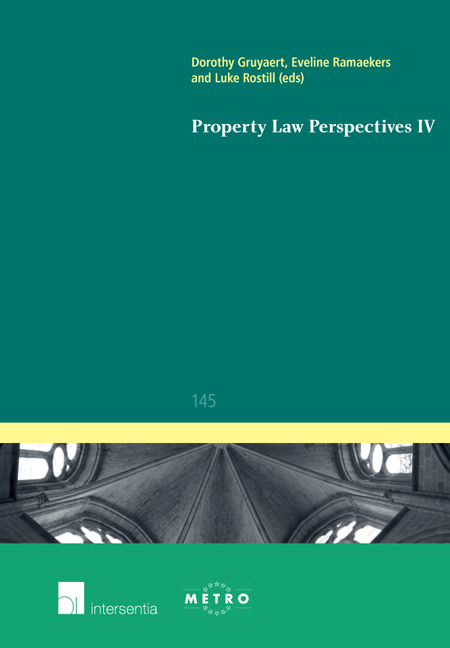Book contents
- Frontmatter
- Preface
- Contents
- Retention of Title v. Immovable Incorporation
- (Alternatives to) the Sale of Churches
- The First in Time Rule in Historical Context
- Paul Krugerbrug Revisited: State Action with an Excessive Impact on Property Rights from a Comparative Perspective
- The Reappearance of Ownership as a Means of Security in Mexican and French Law, the Battles Between Legal Technique and Legal Policy in Insolvency Law
- On the Unity or Disunity of Acquisitive and Extinctive Prescription. Or How Daring Reinterpretations are not Always Right
- Ius Commune Europaeum
The First in Time Rule in Historical Context
Published online by Cambridge University Press: 21 September 2018
- Frontmatter
- Preface
- Contents
- Retention of Title v. Immovable Incorporation
- (Alternatives to) the Sale of Churches
- The First in Time Rule in Historical Context
- Paul Krugerbrug Revisited: State Action with an Excessive Impact on Property Rights from a Comparative Perspective
- The Reappearance of Ownership as a Means of Security in Mexican and French Law, the Battles Between Legal Technique and Legal Policy in Insolvency Law
- On the Unity or Disunity of Acquisitive and Extinctive Prescription. Or How Daring Reinterpretations are not Always Right
- Ius Commune Europaeum
Summary
Introduction
Creditors run the risk of not being repaid in full, especially in the event of insolvency of the debtor. Theoretically all creditors can recover their debt from the proceeds of liquidation. In legal systems based on Roman law, every creditor is satisfied in accordance with the principle of paritas creditorum (equality of creditors) on a pro rata-basis, which means that the proceeds will be divided in proportion to how much each is owed. In practice however, these creditors receive, on average, no payment at all.
The above does not apply to secured creditors, who have taken proprietary security from debtors to support the repayment of loans or other obligations. Traditionally this can take the form of the fiduciary transfer of property (fiducia cum creditore), possessory security (pignus) or consensual security (hypotheca). In the event of the debtor's insolvency, secured creditors take priority over unsecured creditors.
Contrary to fiducia and pignus, non-possessory security interests can be given over the same asset more than once. When this is the case and all secured creditors enforce their hypothec while the claims exceed the value of the charged property, it is relevant to determine the order of priority between those security interests. The basic principle of priority between security interests can be reduced to four words by Roman Emperor Caracalla: prior tempore, potioriure. This means that in the context of priority disputes the first in time to be created prevails.
Owing to the Reception of Roman law, the first in time rule turns up explicitly in the civil code of several continental European countries. Commonly, the principle of priority is expressed in the context of security rights. The range of application is actually wider in most countries, because the first in time rule is usually mentioned as a characteristic of rights in rem in general. The fact is, a real right is attached to property itself and can be enforced against anyone who encroaches upon it. So when successive interests in an asset have arisen, the one to whom a security interest was granted first may enforce his right without hindrance from any subsequent secured creditor.
- Type
- Chapter
- Information
- Property Law Perspectives IV , pp. 41 - 54Publisher: IntersentiaPrint publication year: 2016



